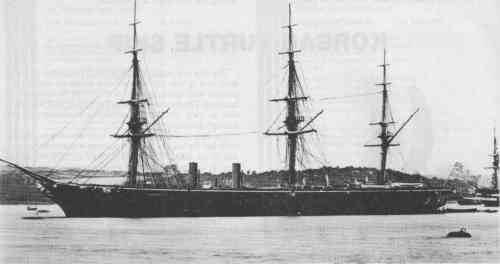- Author
- Periodical, Australian Shipyards
- Subjects
- History - general, Ship histories and stories
- Tags
-
- RAN Ships
- None noted.
- Publication
- June 1990 edition of the Naval Historical Review (all rights reserved)

The restoration of historic sailing and steam vessels is a rapidly increasing shipyard activity around the world. Nautical nostalgia today not only involves the enthusiasm of history buffs but the expertise and high technology of the shipbuilding industry. It is increasingly attracting millions of dollars of government and private funds and this trend will increase in the future.
Here in Australia the Bicentennial celebrations stimulated an upsurge in this work and a fleet of restored sailing vessels, ferries and smaller craft are on view in all ports. Their support to the international tourist trade will ensure the continuation of this attractive dollar spinner.
Britain’s restoration of HMS WARRIOR between 1979 and 1987 demonstrated the skills are still available to restore a large warship built 130 years ago. WARRIOR was of particular interest as she was both sail and steam, she was the first truly armoured man-o-war and she made every other warship of her day obsolete. She was the Royal Navy’s first battleship and also its last.
WARRIOR was ordered in 1859 to counter the recently launched French GLOIRE which was an iron sheathed wooden frigate. The contract won by Thames Ironworks required delivery within two years. The winning tender was £390,000.
Two years, 2 months and 9 days after the signing of the contract HMS WARRIOR was commissioned at Woolwich Dockyard. The elapsed time included the preparation of drawings, building, trials and fitting out.
WARRIOR was 420 foot long, displaced 9,200 tons. The “London Times” described her as a formidable iron-cased frigate. She was in fact the first all iron warship. Her keel and frames were massive cast iron castings. Plates of the same material encased her hull and decks over which was fitted an armour belt consisting of two layers of 9 inch thick Indian teak and a layer of 4½ inch thick hardened wrought iron. She was three masted and was fitted with a Penn horizontal trunk expansion engine of 1,250 normal horsepower. Her armament was 40 guns ranging from 110 pounders to 68 pounders and 34 of these were mounted on the main deck.
In looks, in speed and in armament she was superior to any warship ever built. On her trials she logged 16.514 knots under steam and 14 knots under sail. However, despite this superiority, WARRIOR was never tested, she did not fire a shot in anger in her 22 years of service.
The ship was converted to a stationary depot ship in 1883 and later to a school ship. In 1929 the once proud battleship was cut down to an oil fuelling pontoon and stationed at Pembrokeshire, Wales and there she was forgotten for 50 years.
Mr John Smith, Member for London and Westminster and a lover of old ships, proposed to the House of Commons in 1967 a plan to preserve the hulks of WARRIOR and UNICORN. However, no action was taken. In fact, many Members believed the ships had been broken many years before.
Ten years later the Government decided to close the Llanion Fuel Depot and it was then, in March 1976, the world learnt that WARRIOR was still afloat. The Manifold Trust, a prominent body in ship restoration, undertook to raise the money required to restore the ship. The estimate was £3 million.
In August 1979, WARRIOR was transferred to the Trust and on 2 September she was towed to Hartlepool in north east England. Hartlepool was chosen because of the large number of unemployed shipbuilding workers resident in the port. The Government agreed to pay the wages of workers engaged in the work in conjunction with the EEC and British Steel Corporation. The Hartlepool Borough was not so generous, they charged the Trust £18,000 per year for the use of the disused Coal Berth in the port.
Two shipwrights and six labourers commenced work on the project in October.
Every task in the ship was large. Her 420 foot upper deck was cleared of a century of additions and rubbish. Derricks, oil hoses, valves, sponsons and accommodation were landed. When the vessel was converted for oil fuelling the 4 inch thick teak planking was removed and a 6 inch layer of concrete laid. This was chipped away by a battery of pneumatic drills.




